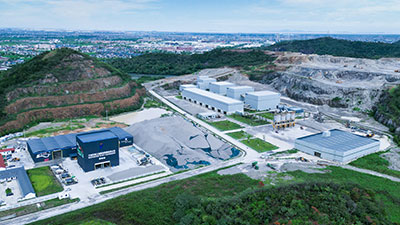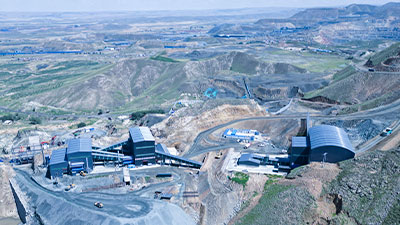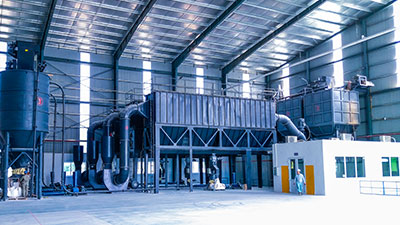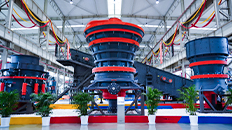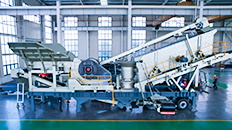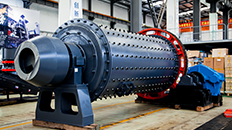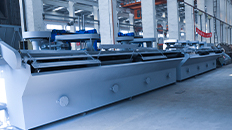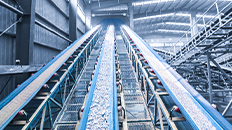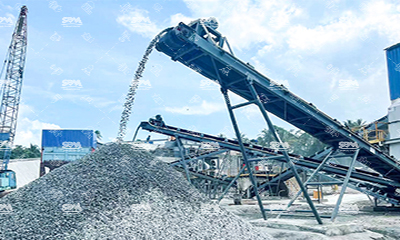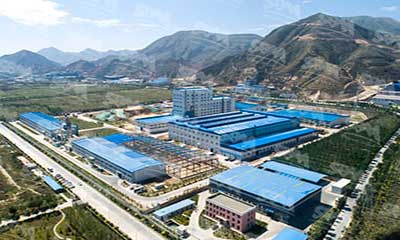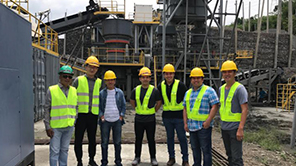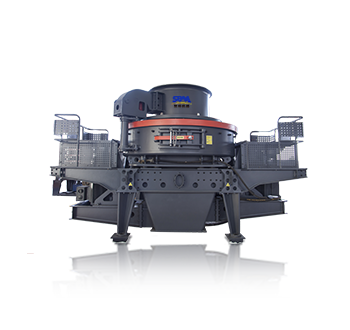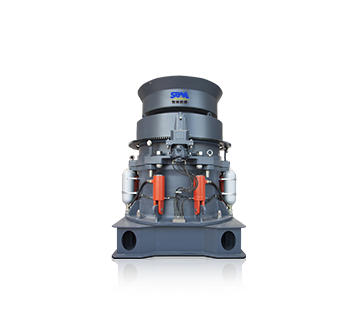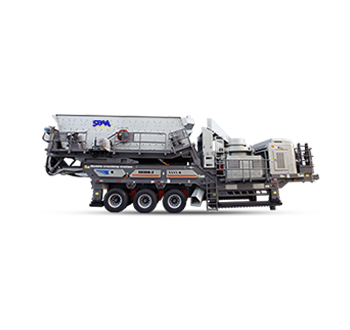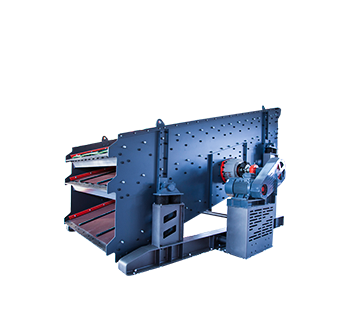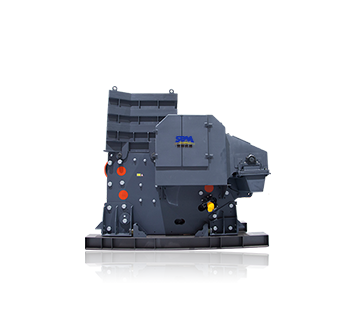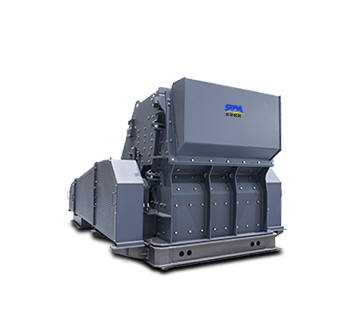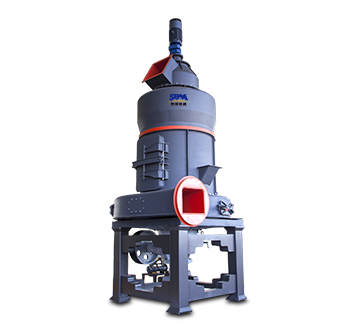Summary:The processing of a silica sand making plant involves feeding, crushing, screening, washing and packaging — crucial for glass, construction & electronics industries.
A silica sand making plant plays a pivotal role in the industrial landscape, serving as a cornerstone for numerous manufacturing processes across a wide range of industries. Silica sand, with its high silicon dioxide content, is a crucial raw material that finds extensive applications in glass production, foundry work, construction, electronics, and more. The quality and production capacity of a silica sand making plant directly impact the efficiency and quality of products in these downstream industries.
In the glass industry, for instance, high - purity silica sand is the primary ingredient in manufacturing various types of glass, from the common window glass to the highly specialized optical glass used in cameras and telescopes. In the foundry sector, silica sand is used to create molds and cores due to its high heat resistance and good casting properties. In construction, it is an essential component in concrete and mortar, contributing to their strength and durability. As industries continue to evolve and demand for high - quality products grows, understanding the operations, technology, and environmental aspects of silica sand making plants becomes increasingly important. This article will delve into all these aspects, providing a comprehensive overview of silica sand making plant.

What is a Silica Sand Making Plant
A silica sand making plant is an industrial facility specifically designed for the production of high - purity silica sand. Its core function is to extract, process, and refine raw materials containing silicon dioxide into silica sand that meets the stringent requirements of various industries.
The production process in a silica sand making plant is multi - faceted. It often begins with the extraction of silica - rich ores or sand deposits from mines or quarries. These raw materials are then transported to the plant, where they undergo a series of mechanical and chemical processing steps. Crushing and grinding operations are typically the initial stages. Crushers break down large - sized raw materials into smaller pieces, while grinders further reduce the particle size to a more uniform and suitable range. This is crucial as it increases the surface area of the materials, making subsequent separation and purification processes more efficient.
Separation techniques play a vital role in a silica sand making plant. Gravity separation methods, such as the use of shaking tables or spiral concentrators, are often employed to separate heavier minerals from the silica - rich fraction based on differences in density. Magnetic separation is another common method. Since some impurities, like iron - containing minerals, are magnetic, powerful magnets can be used to attract and remove these magnetic particles from the silica sand, significantly improving its purity.
Purification processes are also key. Acid leaching is a widely used technique. By treating the silica sand with acids like hydrochloric acid or hydrofluoric acid (under strict safety and environmental control), chemical impurities can be dissolved and removed, resulting in a higher - purity product. Additionally, flotation processes can be used to separate silica sand from other minerals by selectively attaching air bubbles to the target minerals and then skimming them off the surface of a liquid medium.
In summary, a silica sand making plant serves as a crucial link in the supply chain of many industries. Its ability to produce high - quality silica sand in large quantities is essential for the smooth operation and development of industries such as glass manufacturing, foundry work, and construction, which rely heavily on this fundamental raw material.
Components of a Silica Sand Making Plant
Crushing Equipment
Crushing equipment is the initial and crucial part of a silica sand processing plant, responsible for reducing the large - sized raw silica - containing materials into smaller pieces. Jaw crushers are commonly used for the primary crushing stage. They operate on the principle of compressive force. With a pair of jaws, the moving jaw swings back and forth relative to the fixed jaw. When large - sized silica stones enter the crushing chamber between the two jaws, the powerful compressive force exerted by the moving jaw against the fixed jaw crushes the stones. For example, in a large - scale silica sand making plant with a high - volume production requirement, a large - capacity jaw crusher can handle a large amount of raw materials at once, reducing the feed size from several hundred millimeters to about 100 - 200 millimeters, which is suitable for the subsequent processing steps.
Cone crushers are often employed for secondary and fine crushing. They use a combination of compression and shear forces. The mantle (the inner cone) rotates eccentrically within the bowl liner (the outer cone). As the silica - rich materials fall into the crushing chamber between the mantle and the bowl liner, the continuous squeezing and shearing actions gradually break down the particles. Cone crushers can produce a more uniform particle size distribution compared to jaw crushers. They are capable of further reducing the particle size of the pre - crushed silica materials from the jaw crusher to a range more suitable for the screening and washing processes, typically down to 10 - 50 millimeters.

Screening Equipment
Screening equipment is essential for separating the crushed silica materials into different particle - size fractions. Vibrating screens are the most commonly used type. Their working principle is based on the vibration generated by an electric motor - driven exciter. The exciter makes the screen surface vibrate vigorously, causing the silica sand particles on the screen to move in a complex motion, including bouncing, sliding, and rolling.
There are different types of vibrating screens, such as circular vibrating screens and linear vibrating screens. Circular vibrating screens produce a circular - motion trajectory of the screen surface. The particles on the screen move in a circular path, which helps to achieve efficient screening for a wide range of particle sizes. Linear vibrating screens, on the other hand, generate a linear - motion trajectory. They are particularly effective in handling materials that require high - precision screening, as they can provide a more stable and consistent screening effect. For instance, in a silica sand making plant that produces high - quality silica sand for the glass industry, linear vibrating screens can be used to accurately separate the silica sand particles within a very narrow particle - size range, ensuring that the final product meets the strict quality requirements of the glass - making process.

Washing Equipment
Washing equipment is used to remove impurities such as clay, silt, and other contaminants from the silica sand. Spiral sand washers are a popular choice. They consist of a trough, a helical screw, a drive mechanism, and a water - supply system. The principle behind their operation is that the silica sand and water mixture is fed into the trough. As the helical screw rotates, it slowly moves the sand particles along the trough. During this process, the water continuously flushes the sand, washing away the attached impurities. The impurities are then carried away by the overflowing water, while the clean silica sand is discharged from the other end of the trough.
Another type of washing equipment is the hydrocyclone. It operates based on the principle of centrifugal force. The silica sand - water mixture is fed into the hydrocyclone at high speed. Under the action of centrifugal force, the heavier silica sand particles move towards the outer wall of the hydrocyclone and then spiral downwards to the bottom outlet, while the lighter impurities and water are discharged from the top overflow outlet. This separation method is highly efficient in removing fine - grained impurities, which is crucial for producing high - purity silica sand for applications like semiconductor manufacturing, where even trace amounts of impurities can significantly affect the performance of the final products.

Feeding and Conveying Equipment
Feeding and conveying equipment ensure the smooth and continuous flow of materials throughout the silica sand making plant. Vibrating feeders are commonly used to feed the raw silica materials into the crushing equipment. They work by vibrating the hopper containing the materials. The vibration causes the materials to flow out of the hopper at a controlled rate and be evenly distributed onto the conveyor belt or directly into the crusher. This controlled feeding is essential as it prevents over - loading or under - loading of the crushers, ensuring their stable operation and optimal crushing efficiency.
Belt conveyors are the most widely used conveying equipment in a silica sand making plant. They consist of a continuous belt looped around two or more pulleys. One pulley, usually driven by an electric motor, provides the power to move the belt. The silica sand is placed on the moving belt, and the belt transports it from one location to another within the plant, such as from the crusher to the screening equipment, or from the screening equipment to the storage area. Belt conveyors can operate continuously for long periods, have a large conveying capacity, and can be installed in various configurations, including horizontal, inclined, and even curved paths, depending on the layout of the plant. Their reliability and ease of maintenance make them an indispensable part of the silica sand production process, ensuring the seamless transfer of materials between different processing stages.
Silica Sand Processing Plant
1. Feeding Stage
The feeding stage is the starting point of the silica sand production process, and its importance cannot be overstated. Vibrating feeders are commonly employed at this stage. These feeders are equipped with vibrating motors that generate high - frequency vibrations. The raw silica materials, which are often large - sized rocks or ores, are stored in a hopper above the vibrating feeder. As the feeder vibrates, the materials are gradually discharged from the hopper at a controlled and uniform rate.
This uniform feeding is crucial for the subsequent crushing stage. If the feeding is uneven, the crushers may experience over - loading in some parts, leading to increased wear and tear of the crusher components. For example, if a large amount of silica raw materials suddenly enter the crusher, it can cause the crusher's motor to work under excessive load, which may lead to motor burnout or damage to the crushing chamber. On the other hand, a stable and even feeding ensures that the crushers can operate at their optimal capacity, improving the overall efficiency of the crushing process and also contributing to a more consistent particle - size distribution of the crushed products. The vibrating feeder can adjust the feeding speed according to the production requirements and the capacity of the crushers, which is essential for maintaining a smooth and efficient production line.

2. Crushing Stage
The crushing stage is divided into two main sub - stages: coarse crushing and medium - fine crushing, each with its specific functions and equipment requirements.
Coarse crushing is the first step in reducing the large - sized silica raw materials. Jaw crushers are the workhorses of this stage. As mentioned before, they use compressive force to break down the materials. The large - sized silica stones are fed into the V - shaped crushing chamber of the jaw crusher. The moving jaw, driven by an eccentric shaft, swings back and forth towards the fixed jaw. With each swing, the distance between the two jaws decreases, exerting a powerful compressive force on the silica stones. This force causes the stones to crack and break into smaller pieces. The broken materials then fall out of the lower part of the crushing chamber. After this coarse - crushing process, the large - sized silica materials are reduced to a size range that is suitable for further processing in the medium - fine crushing stage, typically from several hundred millimeters to around 100 - 200 millimeters.

Medium - fine crushing further refines the particle size of the silica materials. Cone crushers are often used for this purpose. The cone crusher has a mantle (the inner cone) and a bowl liner (the outer cone). The mantle rotates eccentrically within the bowl liner. When the pre - crushed silica materials from the jaw crusher enter the crushing chamber between the mantle and the bowl liner, the continuous squeezing and shearing actions take place. The materials are gradually broken down into even smaller particles. Cone crushers can produce a more uniform particle - size distribution compared to jaw crushers. They can reduce the particle size of the silica materials to a range of 10 - 50 millimeters, which is more suitable for the screening and washing processes that follow. This stage is crucial as it determines the basic particle - size characteristics of the silica sand, which will have a direct impact on the quality and usability of the final product in various applications.
3. Screening Stage
The screening stage is where the crushed silica materials are sorted according to their particle sizes. Vibrating screens are the key equipment used in this stage. These screens are equipped with a multi - layer screen mesh, each with different - sized apertures. The vibrating screen is powered by an electric - motor - driven exciter, which generates high - frequency vibrations.
When the crushed silica materials are fed onto the vibrating screen, the vibrations cause the materials to move in a complex motion on the screen surface. The particles smaller than the aperture size of the top - layer screen mesh pass through the mesh and fall onto the next - lower layer screen. This process continues until the particles reach the appropriate layer based on their sizes. For example, in a three - layer vibrating screen, the top - layer screen may have a relatively large aperture size, say 50 mm, which allows particles smaller than 50 mm to pass through. The middle - layer screen may have an aperture size of 20 mm, and the bottom - layer screen may have an aperture size of 5 mm. Particles larger than 50 mm remain on the top - layer screen and are considered over - sized.
The over - sized particles that do not meet the required size specifications are sent back to the crushers for further crushing. This is usually achieved through a conveyor system that connects the vibrating screen to the crushers. By recycling these over - sized particles, the production process ensures that the final silica sand product has a uniform and desired particle - size distribution, which is essential for meeting the quality standards of different industries. For instance, in the glass - manufacturing industry, a specific and narrow particle - size range of silica sand is required to ensure the quality and transparency of the glass products. The screening stage, along with the recycling of over - sized particles, helps to achieve this quality control.
4. Washing Stage
The washing stage is essential for removing impurities from the silica sand, thereby improving its purity. Spiral sand washers are commonly used in this process. These washers consist of a long, inclined trough with a helical screw conveyor inside. The silica sand, along with a certain amount of water, is fed into the trough at the lower end.
As the helical screw rotates, it slowly moves the sand particles along the trough from the lower end to the upper end. During this movement, the water continuously flushes the sand particles. The impurities, such as clay, silt, and other fine - grained contaminants, are loosened and carried away by the flowing water. The impurities are discharged from the overflow outlet at the upper - end of the trough, while the clean silica sand is discharged from the other end. The water used in the washing process can be recycled through a water - treatment system. This system usually includes sedimentation tanks and filters to remove the suspended impurities from the water, making it suitable for reuse in the washing process. Recycling the water not only reduces the water consumption of the silica sand making plant but also helps to minimize the environmental impact by reducing the amount of wastewater discharged.
Hydrocyclones can also be used in the washing stage, especially for removing very fine - grained impurities. They operate based on the principle of centrifugal force. The silica sand - water mixture is fed into the hydrocyclone at high speed. Under the action of centrifugal force, the heavier silica sand particles move towards the outer wall of the hydrocyclone and then spiral downwards to the bottom outlet, while the lighter impurities and water are discharged from the top overflow outlet. This separation method is highly efficient in removing fine - grained impurities, which is crucial for producing high - purity silica sand for applications like semiconductor manufacturing, where even trace amounts of impurities can significantly affect the performance of the final products.
5. Collection and Packaging Stage
After the washing and screening processes, the qualified silica sand is ready to be collected and packaged. The clean silica sand is collected through a series of conveyor belts that transport it from the washing and screening areas to the storage and packaging area.
In the packaging area, automatic packaging machines are used to fill the silica sand into various types of packaging materials. The most common packaging materials are woven bags and plastic - lined paper bags. The packaging machines are designed to accurately measure the amount of silica sand to be filled into each bag. For example, they can be adjusted to fill bags with 25 kg, 50 kg, or other specified weights. After filling, the bags are sealed to prevent moisture absorption and contamination during storage and transportation.
The packaged silica sand is then stored in a warehouse before being shipped to customers. The storage area should be kept dry and clean to maintain the quality of the silica sand. Proper ventilation and humidity control are also important to prevent the growth of mold or the clumping of the sand particles. This final stage of collection and packaging is the last step in ensuring that the high - quality silica sand produced by the plant reaches the customers in a suitable and market - ready form, ready to be used in a wide range of industries such as glass manufacturing, foundry work, and construction.
Advantages of a Silica Sand Making Plant
High - Quality Product Output
A well - equipped silica sand making plant can ensure the production of high - quality silica sand. Advanced equipment and sophisticated production processes play a crucial role in achieving this. For example, state - of - the - art crushers and grinders can precisely control the particle - size reduction process, resulting in silica sand with a very uniform particle size distribution. This is essential for many applications. In the production of optical fiber, which is widely used in high - speed communication networks, high - purity silica sand with a narrow particle - size range is required. The uniform particle size ensures consistent light - transmission properties along the length of the optical fiber, minimizing signal attenuation and maximizing communication efficiency.
Moreover, advanced separation and purification technologies can effectively remove impurities from the silica sand. Magnetic separation equipment can extract magnetic impurities, such as iron - containing minerals, with high precision. Acid - leaching processes can dissolve and remove chemical impurities, significantly increasing the silicon dioxide content of the silica sand. High - purity silica sand with a silicon dioxide content of over 99.9% can be produced in modern silica sand making plants. This high - purity product is highly sought - after in the semiconductor industry, where even trace amounts of impurities can cause defects in semiconductor devices, affecting their performance and reliability.
Cost - Efficiency
Cost - efficiency is another significant advantage of a silica sand making plant. Large - scale production in a well - organized plant can lead to economies of scale. When a plant has a high production capacity, the fixed costs, such as the cost of land, buildings, and large - scale equipment, are spread over a larger number of products. For instance, a large - scale silica sand making plant with an annual production capacity of several million tons can produce silica sand at a much lower unit cost compared to a small - scale plant with an annual production of only a few thousand tons. The large - scale plant can negotiate better deals with suppliers for raw materials, reducing the cost of inputs. It can also invest in more efficient transportation and storage systems, further cutting down costs.
Proper equipment selection also contributes to cost - efficiency. Choosing energy - efficient crushers, screeners, and conveyors can significantly reduce energy consumption. For example, variable - frequency drive motors can be installed in equipment to adjust the speed according to the production load, saving electricity. Additionally, modern equipment often requires less maintenance, reducing the downtime and maintenance costs. A well - maintained silica sand making plant can operate continuously for long periods, maximizing production output and minimizing the cost per unit of product.
Environmental Friendliness
Modern silica sand processing plants are designed with a strong focus on environmental friendliness. Advanced dust - control systems are installed to minimize dust emissions. For example, bag - house filters can be used to capture dust particles in the air during the crushing, screening, and conveying processes. These filters can achieve a high dust - collection efficiency, often over 99%, effectively reducing the amount of dust released into the atmosphere. This not only benefits the environment by reducing air pollution but also improves the working conditions for the plant employees, protecting their health.
Water - recycling systems are also commonly employed in silica sand making plants. In the washing process, a large amount of water is used to remove impurities from the silica sand. Instead of discharging the wastewater directly, modern plants use sedimentation tanks, filters, and other water - treatment equipment to purify the wastewater. The recycled water can then be reused in the washing process, reducing the overall water consumption of the plant. According to industry statistics, a well - designed water - recycling system in a silica sand making plant can reduce water consumption by up to 70%, which is in line with the global trend of water conservation and sustainable development.
Silica sand making plants are of great significance in modern industry. They are composed of a series of key components, including crushing, screening, washing, and feeding and conveying equipment, each playing an irreplaceable role in the production process. The production process, from feeding to collection and packaging, is a complex and well - coordinated operation that ensures the production of high - quality silica sand.
The applications of silica sand produced by these plants are extensive, covering industries such as glass manufacturing, foundry, ceramics, refractory materials, and the chemical industry. The high - quality product output, cost - efficiency, and environmental friendliness are the remarkable advantages of silica sand making plants, making them not only important for industrial production but also in line with the trend of sustainable development.

